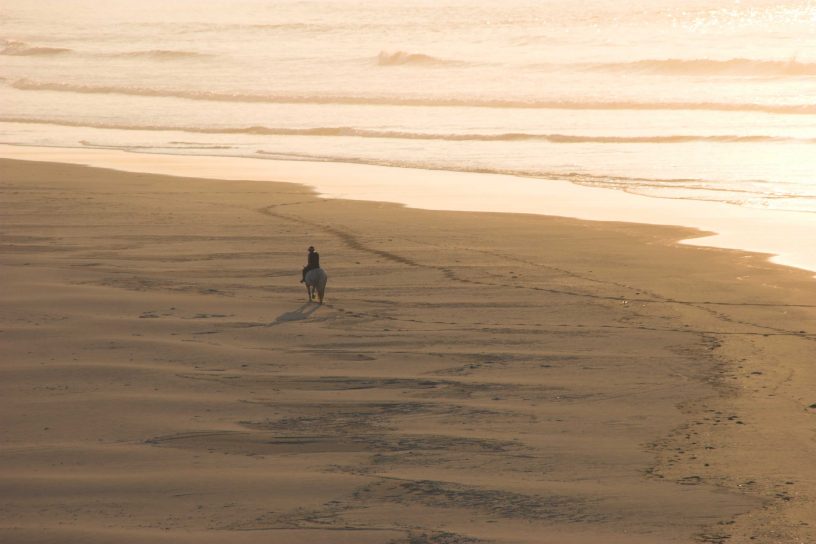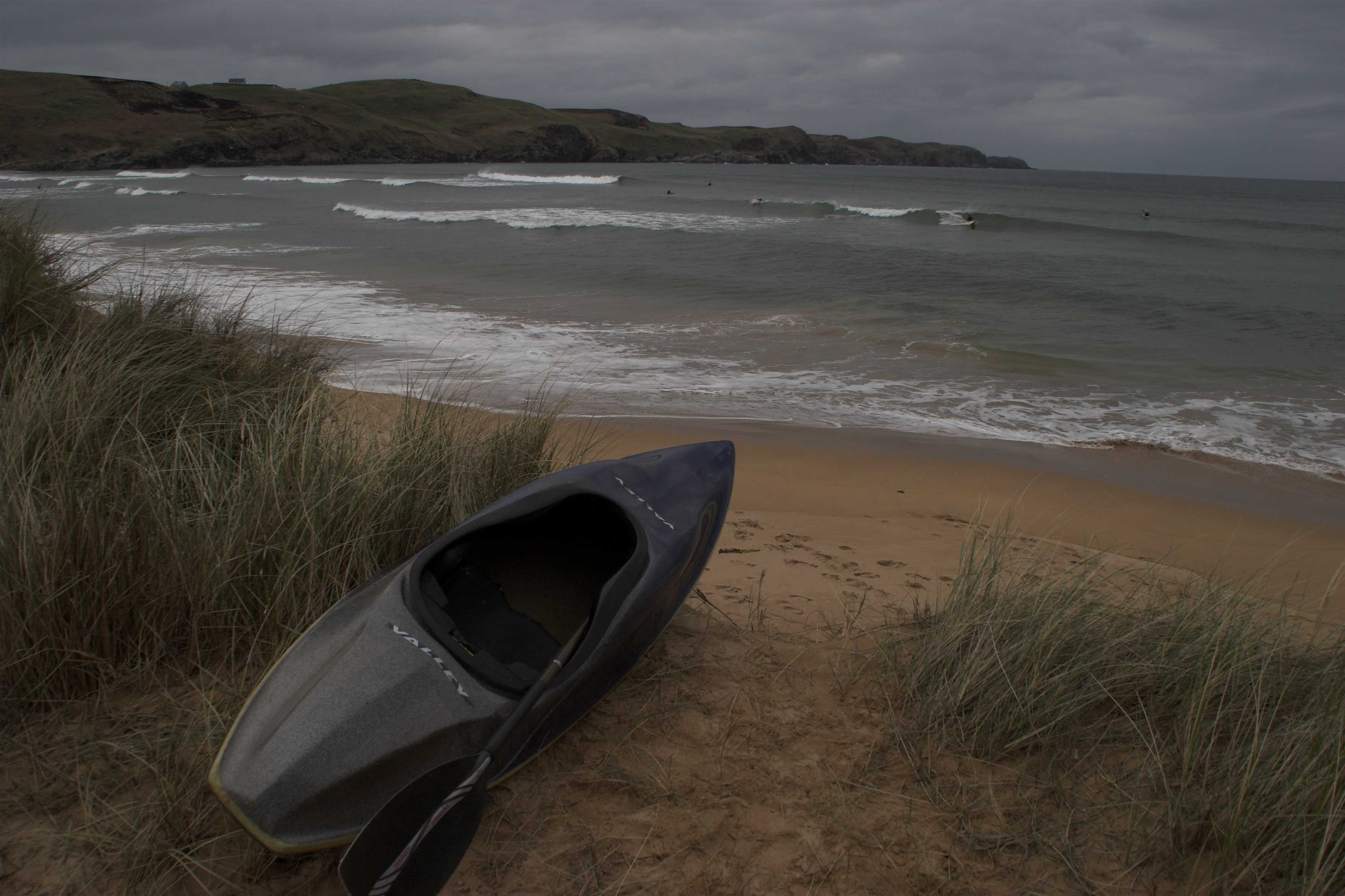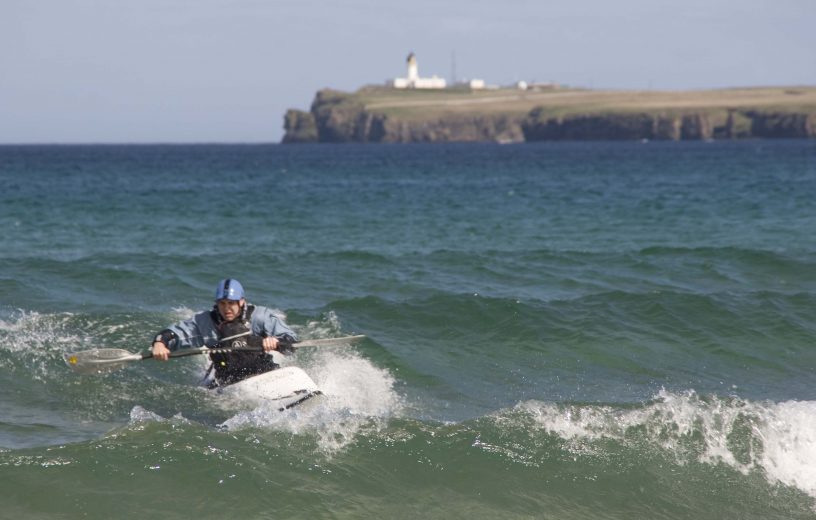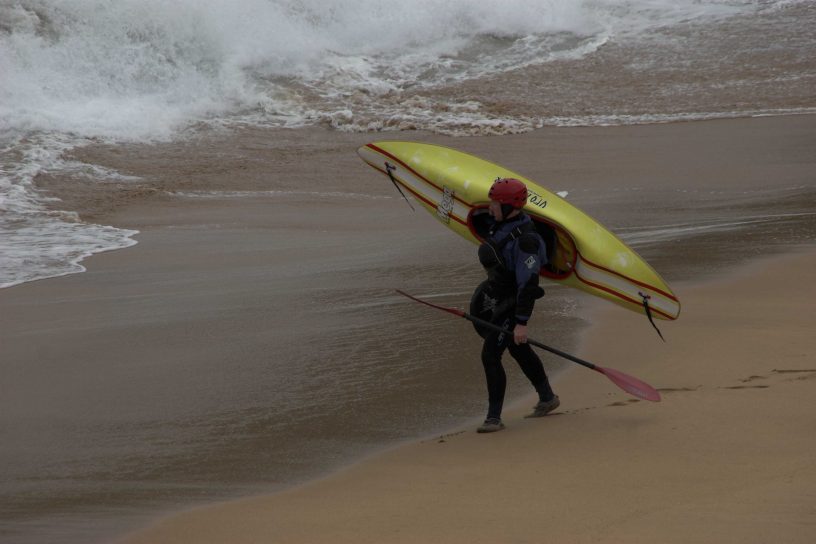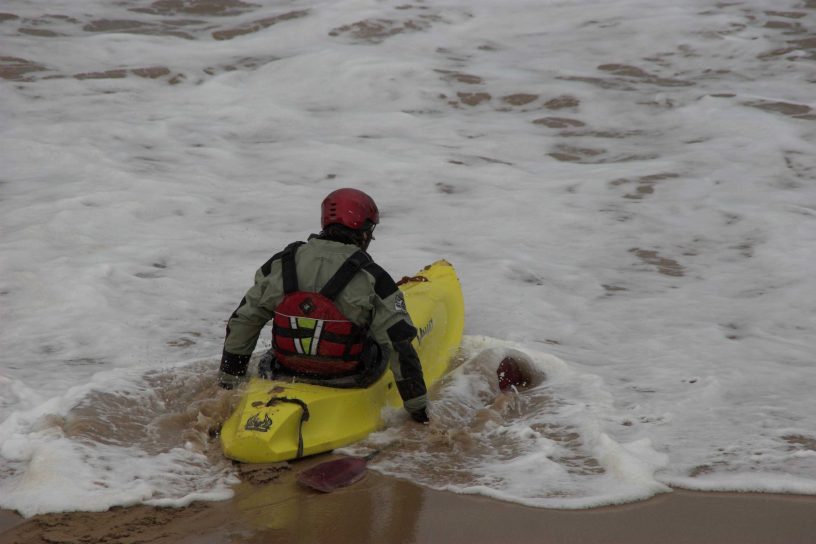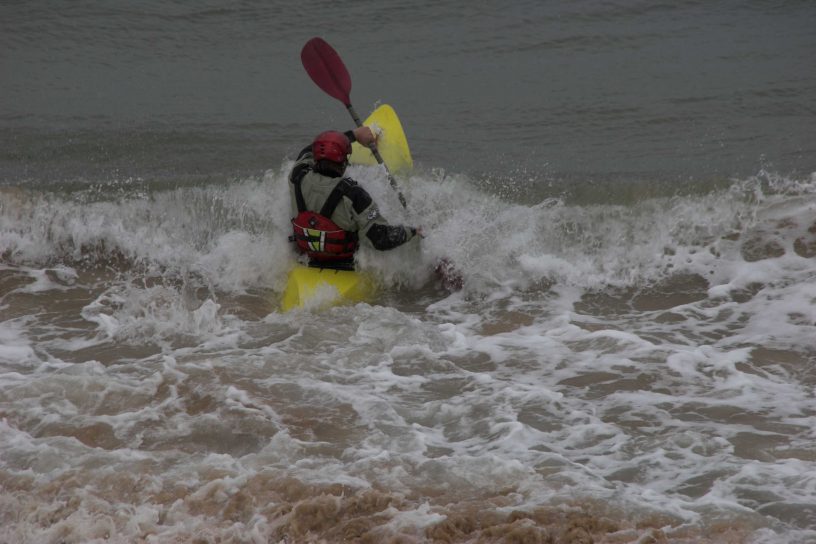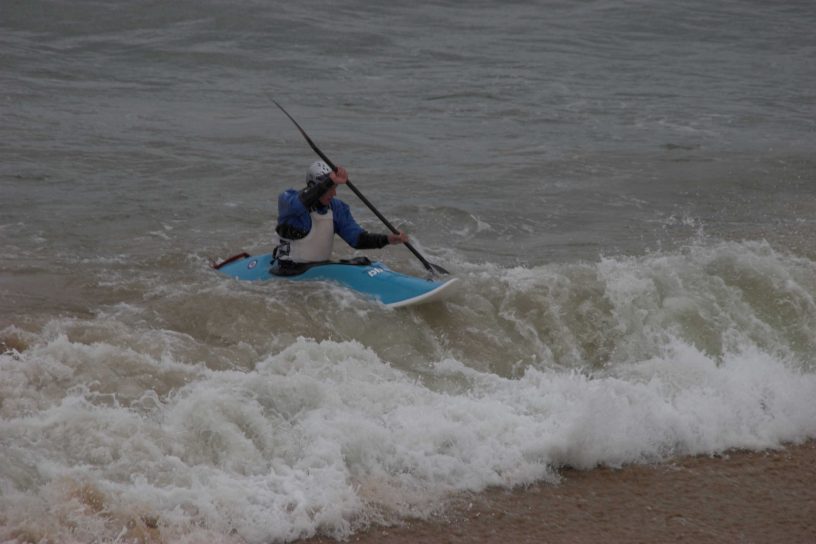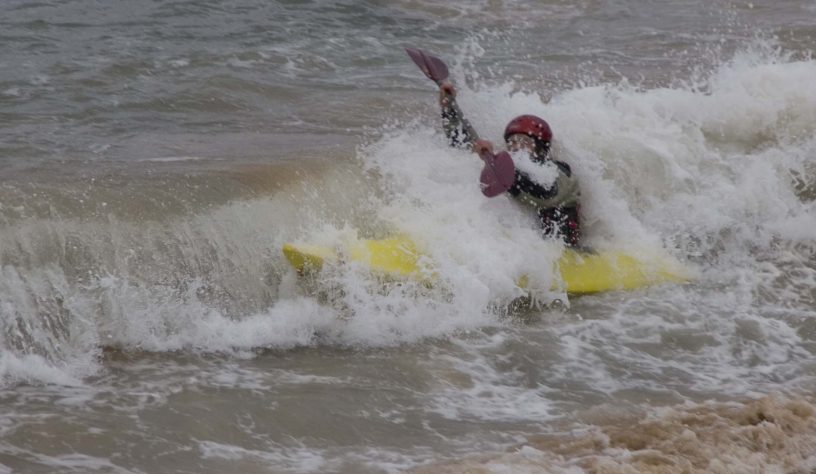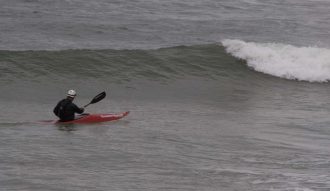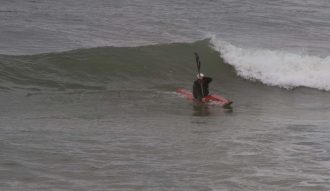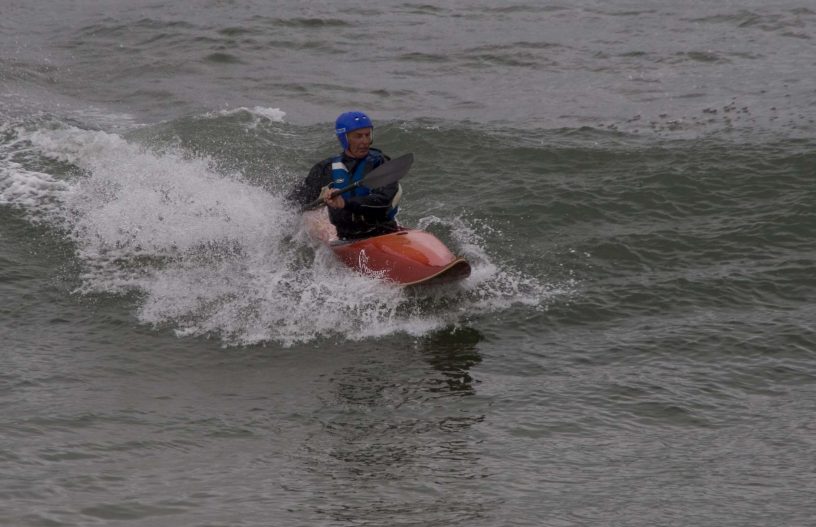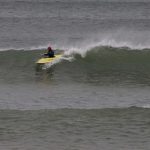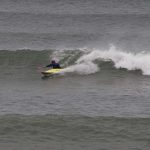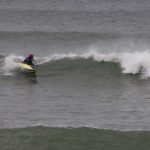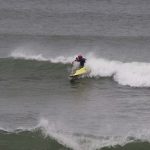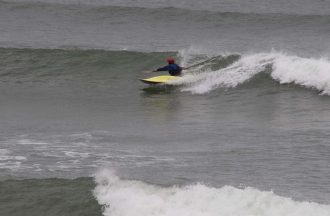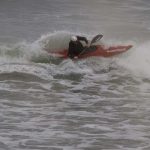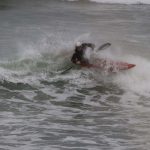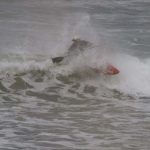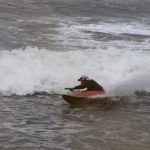Improve Your Surf Kayaking
By Ian Sherrington, Chief Instructor
For surfers looking for their own space and a friendly welcome, you can’t beat Scotland. Don’t take my word for it, I’m bias, I live here. The most comprehensive guides to surf venues are written by board surfers. Here’s what the two main guidebooks have to say:
“Scotland can justly lay claim to having the biggest, the best, and the most consistent surf in Britain” – Surf UK
“Scotland is better known for it’s Highlands, whisky, lochs and bagpipes…but there’s little doubt that all three of Scotland’s coasts receive excellent waves” – The World Stormrider Guide
There are many great venues that can be linked to make a great road trip. If I were to choose just one base though it would have to be Caithness, Scotland’s North Shore. The breaks from Sinclair’s Bay near Wick through to Torrisdale by Tongue pick up swell from southeast, through north, to westerly. So if there’s swell there is usually a range of options.
The Road Trip
Lets start out west at Torrisdale and Farr Bay. They are close together Farr being a very friendly venue and beautiful beach; it can also be a place to hide from the wind, the small bay being enclosed by dunes and a cliff. Torrisdale beach has several breaks along its never-ending sands. This is a remote and wild venue that, almost bizarrely, can be accessed with a one-minute walk from the car. It is often the case that you would be the only team on the beach. You are your own rescue here, and on a windswept day it’s an intimidating place. You should be particularly careful around the river mouth break. As the lagoon drains it creates a powerful rip. But when the weather gods are kind, then you will share the privilege of being there with a few seals and maybe a horse rider or two.
A little further along the coast, Strathy and Melvich provide two more beautiful venues with dunes and good parking. This coast currently has easy access to wild places. Many surfers wild camp or live out of vans. The local councils work hard to keep the car parks and toilet facilities clean. But I would ask you to carry as much rubbish away as possible to bins in the towns, trying to keep our impact on this wonderful coastline to a minimum.
The Pipe reef in Thurso bay is a world-class kayakers wave having played host to 2 World Championships. It is very surfable in small conditions for competent surf kayakers. However, with a large swell, it can also hold a large hollow right-hander that is not for the faint hearted (10 feet overhead on a kayaker).
Just north of Wick, Reiss Beach can provide a sheltered venue if the North Coast is blown out. A fun, family venue when small it again has golden sands, clean water and great views, this time to Ackergill lighthouse.
TIPS FOR SUCCES IN THE SURF ZONE
Getting off the beach
Getting on and off the water with fins in our boat can be a tricky business. It’s hard to get off the beach quickly when you’re draggin’ your tail! Spend extra time watching, choosing your spot and timing your launch between sets. Most fins are fairly strong if dragged straight through the sand, but are more easily snapped if pushed sideways up the beach. You will want somewhere where you can get floating quickly to avoid being caught and spun by the waves. Maybe get someone to help you launch.
Getting off the beach with fins
Get your timing right and paddle hard
Coming back in you can ride in on the back of the wave to keep the fins high and avoid running up the sand. It is normal in bigger surf to manically jump out at the last minute, preferring to get wet than to damage gear! If you get caught, remember to keep tucked in a tight low brace. Any reaching for a high support is risking a classic shoulder dislocation!
Riding the back of the wave to keep fins floating
A dislocation waiting to happen?
Ready for Take Off
In this sequence Neil is watching the wave take shape, and turns in the perfect place to get an easy take off. We would often aim to take off in the steep pocket next to the breaking wave. Here Neil has used the push from the white water to help his take off on a wave that is not very powerful.
Neil picking up a wave
The Rudder is Dead – Long Live the Rudder!
The photograph shows John very competently using a down wave rudder. If you are paddling a plastic river boat with quite rounded edges, then you may well have to use this type of rudder to hold a diagonal run on the wave. However if you have a sharp edged surf kayak then try and shake the use of a rudder in this way and use edge control to hold your line. You will still find you use a dab or two with a rudder to change direction, but over use of the rudder drags off speed.
John Ingles demonstrating a Down Wave Rudder
Picking the Pocket
Here we see Dave planning a series of cutbacks that will keep him in the steepest part of the wave, the “Pocket”. Notice how he climbs and drops on the wave as well as changing direction. Dropping down the wave generates speed and driving a carving boat back up the wave allows Dave to carry as much speed as possible through the sequence.
Dave picking the pocket
Using the Speed – Looking to the future
Having generated speed Neil uses the power of the oncoming wave in this high-energy sequence. Hitting the top of the wave hard Neil uses the push of the oncoming breaking wave to help pivot the boat. Often manoeuvres like this need to be done with commitment and confidence. Neil shows this in the way his body is turned ahead of his boat. Looking for future water even when he’s got a face full of spray!
Enjoy your surfing wherever you hit the water this summer, or maybe book on our Surf Kayak & SUP Gathering in Spetember.
https://www.glenmorelodge.org.uk/cat-9-Surf%20Kayaking/course-539-surf-kayak-sup-gathering/
Ian Sherrington is Chief Instructor at Glenmore Lodge. He is a Level Five Coach Surf and Inland, and has captained the Scottish Surf Team.
